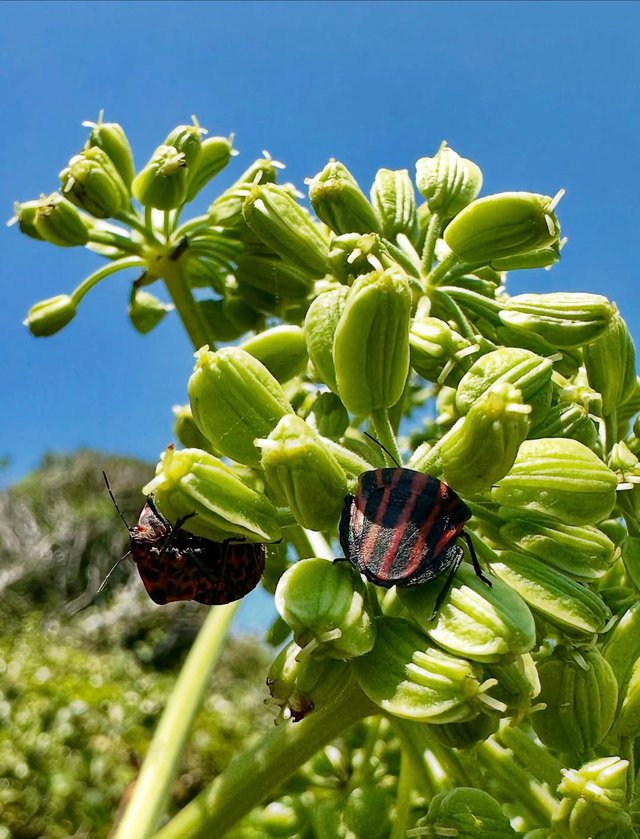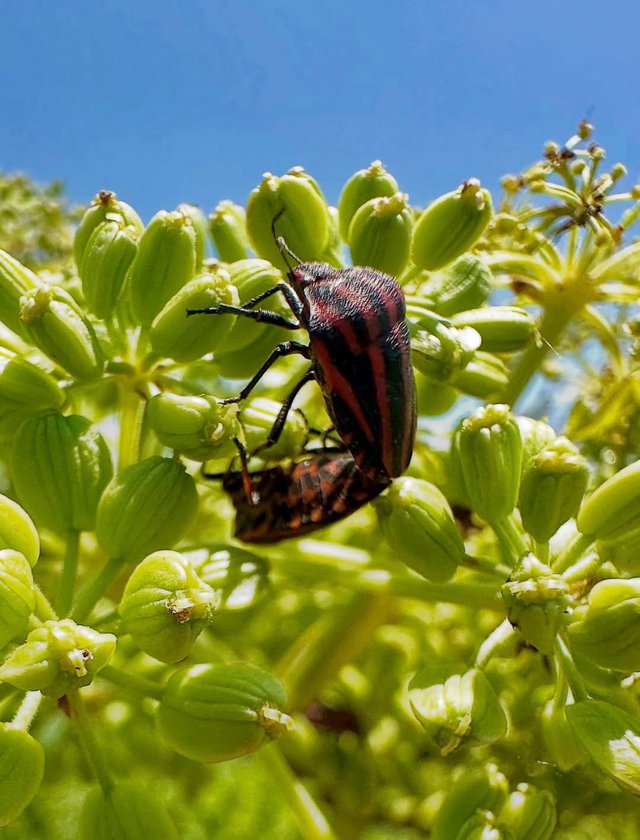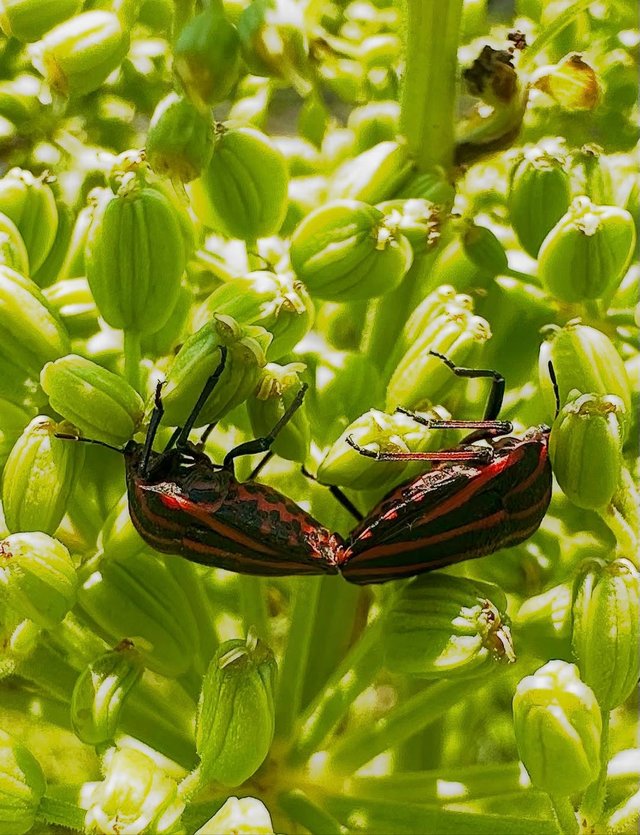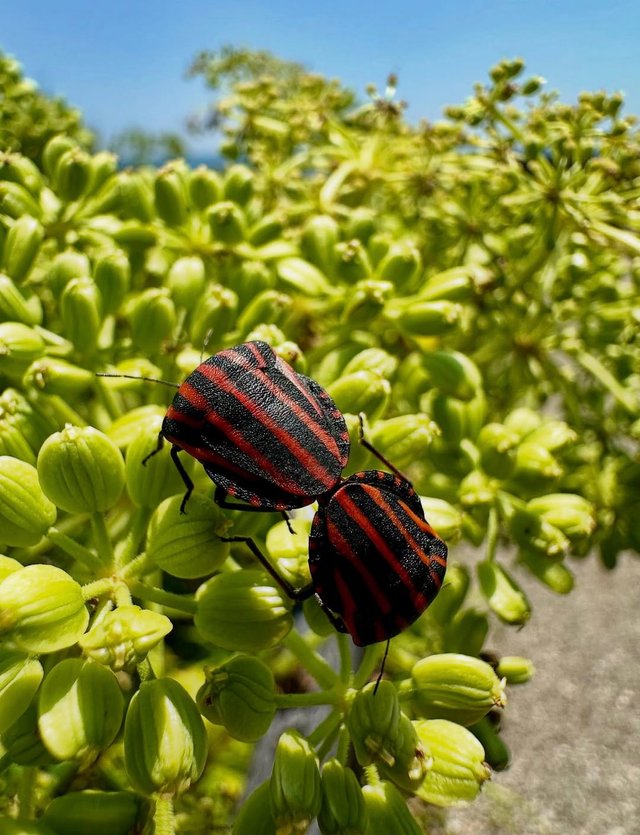Graphosoma lineatum
Nature never ceases to surprise us with its intricate designs, vibrant palettes, and curious creatures. Among its many marvels is Graphosoma lineatum, commonly known as the striped shield bug or Italian striped bug—a small but unmistakably eye-catching insect that plays a subtle yet significant role in the ecosystems of Europe and parts of Asia.The true shield bugs,” and it truly lives up to that name. The most distinctive feature of this bug is its bright red-orange body adorned with bold black longitudinal stripes, giving it a striking, almost ornamental appearance. These contrasting colors aren’t just for show—they serve as a warning signal to predators. This kind of coloration is called aposematism, and it’s a natural strategy used by many insects to advertise their unpalatability or potential toxicity.
The bug has a flattened, shield-shaped body, typically measuring around 8–12 mm in length. Its underside is also black and red, and the antennae and legs are mostly black. While it may look like a harmless beetle at first glance, closer observation reveals the unmistakable traits of a stink bug, including the characteristic scent glands that emit a pungent odor when the bug feels threatened.
Graphosoma lineatum is native to southern and central Europe, with its range extending into North Africa and western Asia. In recent years, it has been expanding northwards, possibly due to climate change, and is now found in more temperate zones.Though small, Graphosoma lineatum is a wonderful example of how vivid design, smart defense, and ecological harmony come together in the natural world. Whether you’re a seasoned entomologist or a curious nature lover, spotting one of these striped beauties on a sunny flower head is a moment worth appreciating.




